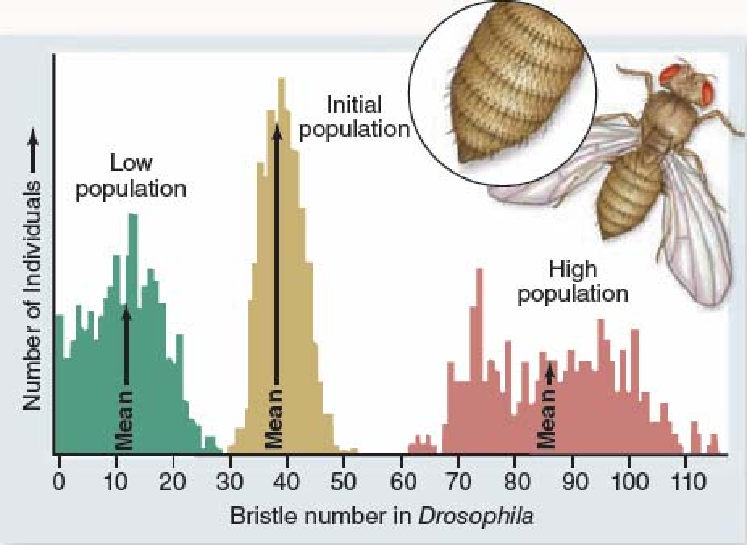If you think of the earthworm body plan as a drinking straw within a pipe, where would you expect to find most of the tissues that developed from endoderm?
A) lining the straw
B) lining the space between the pipe and the straw
C) forming the outside of the pipe
D) forming the outside of the straw
Answer: A
You might also like to view...
The figure below shows results of bristle number in Drosophila flies after 35 generations of artificial selection. This figure suggests that

A. bristle number has evolved beyond the original range of phenotypic variation for this trait.
B. after 35 generations of selection, populations no longer exhibit variation in bristle number.
C. natural selection cannot lead to large phenotypic changes.
D. at the end of the experiment, "high population" flies were unable to interbreed with "low population" flies.
Clarify Question
What is the key concept addressed by the question?
What type of thinking is required?
Gather Content
What do you already know about artificial selection? What other information is related to the question?
Choose Answer
Given what you now know, what information is most likely to produce the correct answer?
Reflect on Process
Did your problem-solving process lead you to the correct answer? If not, where did the process break down or lead you astray? How can you revise your approach to produce a more desirable result?
Eukaryotes have the ability to take in nutrients by phagocytosis, whereas prokaryotes do not. Which of the following explains the advantage this brings to eukaryotes?
A. Eukaryotes are able to get bigger because they can now ingest larger materials. B. Phagocytosis provides eukaryotes with a way of obtaining more DNA for their genome, which allows them to become more complex. C. Phagocytosis provides eukaryotes with a way of obtaining more RNA for translation, which allows them to become more complex. D. Eukaryotes are able to exploit other, more complex materials for food that prokaryotes cannot. E. None of the answers options is correct.
Methanogens, thermophiles, and halophiles characterize many members of this taxonomic group of microbes
a. Eukarya b. Archea c. Bacteria d. None of the above
Which of the following glands secretes hormones that enable the body to respond to stress?
A) pancreas B) adrenal C) pineal D) parathyroid